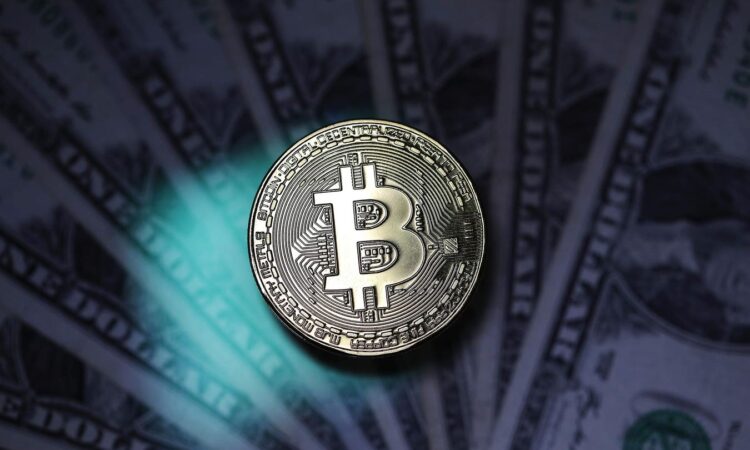
LONDON, ENGLAND – DECEMBER 07: A visual representation of the digital Cryptocurrency, Bitcoin … [+]
Bitcoin’s inflation rate post-halving is now 75% less than current US inflation and 72% lower than gold’s annual issuance. Following the April bitcoin halving, the block reward fell from 6.25 BTC to 3.125 BTC, significantly impacting the cryptocurrency’s issuance rate. Each halving event decreases the supply of new bitcoins, tightening the market supply and potentially increasing the asset’s value over time.
With approximately 450 BTC mined daily, the current inflation rate for bitcoin stands around 0.84%, whereas the most recent US inflation data for May came in at 3.4%. This reduction in Bitcoin’s inflation rate marks a significant milestone, as it now undercuts even the lower boundary of gold’s annual inflation rate, which ranges between 1% and 3% per year. Gold mining issuance contributed to a 1% increase in supply, while recycled gold is also considered in its inflation rate, which came in at 9% in 2023, leading to a net 3% increase in gold’s circulating supply.
The April halving event, hardcoded into bitcoin’s blockchain protocol, occurs approximately every four years and reduces miners’ reward for verifying transactions and adding new blocks to the blockchain by 50%. This mechanism controls the supply of bitcoins and mimics the scarcity dynamics of precious metals, thereby insulating the currency against inflation. As of the latest halving, the total circulating supply of bitcoin was close to 19.7 million out of a maximum of 21 million, setting the stage for a post-halving inflation rate of approximately 0.84% per annum.
Historically, bitcoin halvings have been followed by significant price increases. For instance, after the previous halving in May 2020, bitcoin’s price increased fivefold in the following year.
Price performance since each halving
The limited number of bitcoins that can enter circulation makes it a scarce asset, which, for some investors, is enough to make them valuable. The recent halving event has also increased attention and speculation within the crypto community, with many anticipating a similar bullish trend.
The impact of the halving on bitcoin’s price is multifaceted. On one hand, the reduced supply of new bitcoins entering the market can lead to increased demand and a corresponding rise in value. On the other hand, the event also reduces the incentive for miners to continue their activities, which can potentially decrease its security. An increased understanding of this dynamic led to a rise in the price of bitcoin in the months leading up to the most recent halving event as the price of bitcoin hit an all-time high of over $73,000. This marked the first time bitcoin marked a new peak pre-halving.
Halvings highlight bitcoin’s unique deflationary properties compared to traditional fiat currencies, whose central banks can increase the supply at will. Bitcoin’s programmed scarcity gives it a unique resistance to inflation, where the annual production of gold tends to increase. This potentially decisive advantage for bitcoin garners growing interest among financial analysts and investors.
Despite these unique deflationary properties, bitcoin remains a relatively young asset compared to gold, a tried-and-true store of value for millennia. Its increasing adoption, marked by milestones such as the approval of spot ETFs and its record-high prices, does not prevent it from experiencing sharp fluctuations. To establish itself as a globally recognized store of value, bitcoin will need to continue to prove its durability and increased stability.
Ultimately, the fourth bitcoin halving has significantly reduced the cryptocurrency’s inflation rate, making it lower than that of gold and the current US inflation rate. In a world struggling to control inflation, this has the potential to enhance bitcoin’s value proposition as a stable store of value and a hedge against the traditional financial system.






